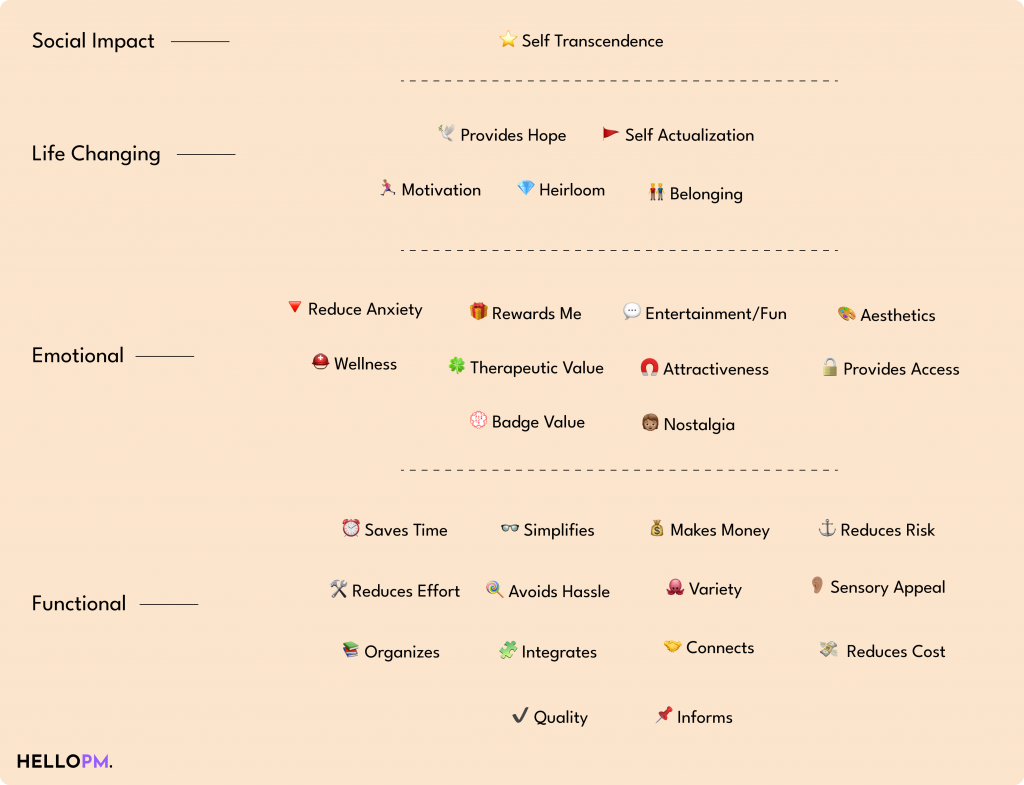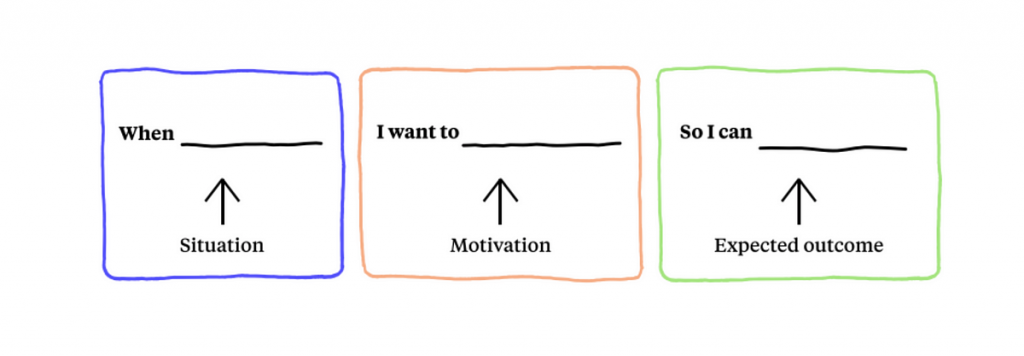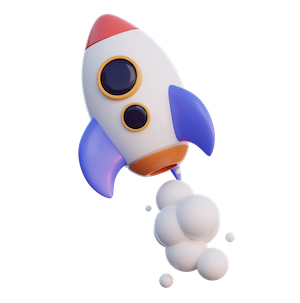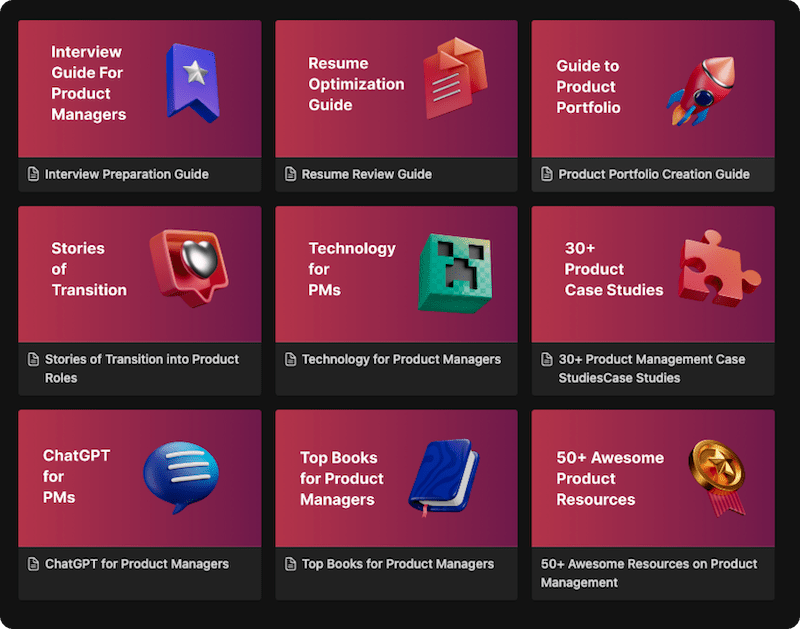It’s easy to fall in love with your product idea.
The new technology (AR/VR/AI/ML/Web3 or anything) that you have recently read about, appears to create a dent in the universe. You believe that the users would absolutely love the product because of its latest tech, super dope UI, and whatnot.
However, the reality hits when you launch the product and no one seems to care about it.
This is, unfortunately, the reality of many products. These products majorly fail to understand the customer needs well.
The good news is, with the right approach we can make a lot of people care about our product (or create products that people care about). One of those effective approaches is Understanding the user’s Job to be done.
The fundamental idea behind Jobs to be done
Jobs to be Done is a framework proposed by Clayton Christensen, and is centered around the idea that “People hire your product to perform a certain job they need to get done“.
This framework puts the user’s problem and context at the center and then helps us understand their thought process to find the correct product to address their need.
Product managers can use the Jobs to be Done framework to reveal important user insights which can in turn help them:
- Create new products,
- Improve existing products,
- Finding the right competitors,
- Prioritize the product roadmap, and
- Decide the right marketing and positioning strategies.
Later in this article, we will understand these use cases with relevant examples.
Understanding Jobs to be Done
Jobs to be done help us understand the reason why people use certain products.
For example: When we buy a drill, what we are effectively looking for is a hole in the wall. The drill is the product we have hired to get the job of “drilling the hole” done.
Rather than focus on the demographics of the users, Jobs to be Done focuses on understanding:
- The Job: The functional, social, and emotional tasks the consumer wants to accomplish.
- The Circumstances: The specific context in which the job needs to be done.
By focusing on these two aspects, companies can better understand customer motivations and create products or services that effectively meet those needs.
I want to use Spotify to help me play music to make my trip with friends memorable.
Steps to Implement Jobs to Be Done Framework
Jobs to be done can be implemented by following these 5 steps:
- Identify the job: Talk to users, conduct surveys, and do observational research to find out why people use or hire your product.
- Define the job: Clearly define what the job is all about. Consider all aspects including functional, social, and emotional aspects.
- Understand the circumstances: Identify the context or circumstances in which the job is performed.
- Prioritize the right job: Not every job would be important to customers or relevant to your business. Filter and prioritize the most appropriate job.
- Design a solution: Develop a product or service that helps the customer get the job done more effectively. Find analogies, research competition, and brainstorm with your team to find the right solutions.
A common mistake to avoid while using jobs to be done
Most people only consider the functional aspect of the job, and miss on important underlying emotional and social motivations. We, humans, are emotional and social animals, and most of our decisions are not logical. Hence uncovering the emotional and social jobs is critical to creating any good product.
Here is a list of emotional, social, and functional jobs taken from Bain’s needs pyramid.

Job steps and variables
To create innovative products, you need to go deep into a job and its context.
A great way to look at a job is to break it down into job steps and needs. Job steps are the intermediatory steps the user has to go through in order to get the job done, needs are his problems/desires associated with each job step, while variables are factors that can be optimized to make their experience better or worse.
Let’s consider an example:
The job of Travelling from point A to point B can be broken down as follow.
| Job Steps | Job Needs | Job Variables |
|---|---|---|
| Determining the departure time | Need to consider factors like traffic, weather, and any appointments at the destination. | Time of day, Day of the week |
| Choosing the mode of transportation | Need to evaluate options based on cost, speed, convenience, personal preferences, and environmental impact. | Available transport options, personal preferences, environmental considerations |
| Planning the route | Need to consider the fastest, safest, and most convenient route. Traffic and road conditions should also be taken into account. | Traffic conditions, Road conditions, GPS availability |
| Commencing the journey | Need to ensure that all necessary items are packed (if applicable), and that the mode of transportation is safe and ready. | Weather conditions, Vehicle condition |
| Navigating through the route | Need to follow the planned route, making adjustments as necessary based on real-time conditions. | Traffic updates, GPS reliability |
| Arriving at the destination | Need to find parking (if applicable) and ensure personal belongings are collected. | Availability of parking, safety of parking location |
Now as product managers, we can focus on improving the job variables to give users a better experience. This unlocks a new world of possibilities for user-centric innovation.
For example, Google map helps us understand traffic condition well, and improve the job steps of navigation.
How to frame job statements
There are multiple ways to frame the jobs statement, one of the popular templates is:
When (situation), I want to (job), so I can (expected outcome).

Here are a few examples:
Music Streaming App 👉🏽 “When I’m working out at the gym, I want to listen to high-energy music, so I can stay motivated and enjoy my workout.”
Project Management Tool 👉🏽 “When I’m managing a team project, I want to easily assign tasks and deadlines, so I can ensure the project is completed on time and nothing falls through the cracks.”
E-Commerce Platform 👉🏽 “When I’m shopping for clothes online, I want to see how the clothes look on models of my size, so I can make a better purchase decision.”
Food Delivery App 👉🏽 “When I’m too tired to cook after a long day of work, I want to order food from my favorite local restaurant, so I can relax and enjoy a good meal.”
Online Learning Platform 👉🏽 “When I’m trying to learn a new programming language, I want to practice with real-world projects, so I can gain practical experience and build my portfolio.”
Each of these Job Statements gives a clear idea of the job to be done, the context in which it arises, and the goal that the user wants to achieve. This clarity can guide the product development process, ensuring that new features or products are designed to meet real user needs.
Practical uses of jobs to be done for Product Managers
Product managers have a lot of important applications of Jobs to be done. Here are a few of them with examples.
✨ Create new products
Understanding the important user needs and desires is an absolutely essential part of any new product or service development. Looking at user needs from a Job to be done perspective makes it easier and more effective to uncover the real user needs:
For example, Uber might have been created from the job statement 👇🏽
“When I need to get from one place to another quickly and conveniently, I want to request a reliable ride from my current location, so I can reach my destination on time without the hassle of driving or finding parking.”
This statement captures the core job that Uber does for its customers: providing a convenient, reliable transportation option that can be requested on-demand from virtually anywhere. It highlights the convenience factor, the need for reliability, and the desire to avoid the common hassles associated with traditional transportation methods, such as dealing with traffic and finding parking.
🛠️ Improve existing products
By identifying the right job users hire your product for and breaking it down into job steps and variables you can make the right additions and improvements to your product.
For example, Uber understood that one of the critical job steps to give the best experience to the user is to make sure the rider feels safe across the journey. Hence they have launched many safety features like share location, emergency contacts, and even an SOS button.
The key here is to go deep into the jobs users are trying to do, map the complete user journey inside and outside your product into job steps and then improve for associated variables.
🥊 Find the right competitors
The Jobs to be Done (JTBD) framework can be used to identify competitors by focusing on the job that customers are trying to get done, rather than focusing on the product or service itself.
In the JTBD framework, a competitor is any solution that a customer could use to get a job done. This can include traditional direct competitors that offer a similar product or service, but it can also include indirect competitors that offer a different type of solution for the same job.
Let’s consider the job of “Booking a Cab.”
Job to be Done: “When I need to reach a destination at a specific time, I want to book a reliable and timely ride, so I can arrive promptly and comfortably.”
Potential Solutions (Competitors): Uber, Lyft, traditional taxi services, public transportation (buses, trams, metro), bike or scooter rentals, walking, driving your own car, car rental services, etc.
In this example, while Uber and Lyft are direct competitors in the ride-hailing market, traditional taxi services also serve the same job and can be considered competitors. Other modes of transportation like public transit, bike rentals, or driving one’s own car also get the job done and are thus competitors.
Even non-transportation solutions could be seen as competitors if they serve the job, such as teleconferencing software that eliminates the need to travel for a meeting.
Understanding these competitors gives a broader view of the competitive landscape and can inform decisions about how to differentiate the product, improve service, and appeal to more customers.
🎯 Prioritize the product roadmap
Every job and job need is not the same. As a product manager, you need to solve for jobs that are
- Important for the user
- Impactful for the business
Jobs to be done will help you assess the importance of the job by understanding its criticality and how painful is the current experience for the user.
The Reach and Impact part of RICE prioritization is drawn from the importance of the job that the user is hiring the product for, given a specific context.
📣 Decide the right marketing and positioning strategies.
By far we have known that the users care less about our products, and more about the job in their life that the product accomplishes them to do.
This insight can help marketing and growth teams to craft compelling value propositions with the user’s job and context at the center.
In your value proposition, you need to communicate the job in the language the user can relate to, and clearly mention how you help them accomplish it in a better way.
For example, the job statement for Slack is:
“When I’m working with a team, I want to communicate and collaborate efficiently, so we can get more done and keep everyone in the loop.”
Taking help from this job statement, Slack positions itself as a “channel-based messaging platform,” emphasizing its ability to bring team communication and collaboration into one place, making it easy to stay organized and productive. It’s messaging often highlights features like integrated file sharing, searchable history, and integration with other tools, showing how it does the job better than alternatives.
Major ideas to take away from the Jobs to Done Framework
The three important takeaway ideas from implementing Jobs to Be Done are:
1️⃣ Focus on the problems and context of the users, rather than only their demographics. From persona to problems.
2️⃣ Generally the core jobs of the users remain consistent. The basic jobs of commuting, being healthy, earning money, saving money, building relationships, etc. are constant across the ages. The products which do these effectively are able to replace the older ones. Innovate solutions by understanding the problems well.
3️⃣ Empathy inspires Innovation. Understand the job steps and variables really well in-depth. This will help you get to the real needs and motivations of the users.
That was all about Jobs to be done, I hope you folks use it to create better products.
Here are other product management frameworks that can help you create better products.
 WATCH HELLOPM COHORT IN ACTION
WATCH HELLOPM COHORT IN ACTION



0 thoughts on “Jobs To Be Done – The Practical Guide for Product Managers”
Comments are closed.